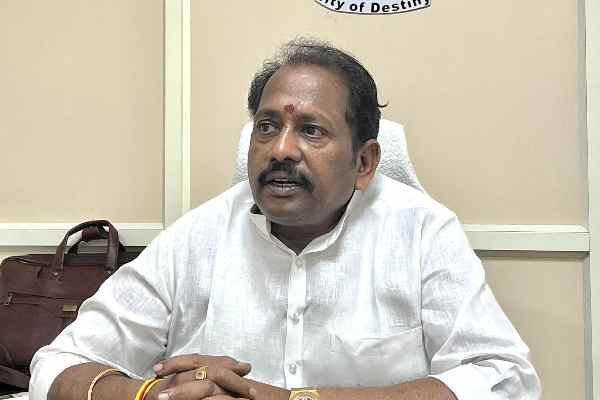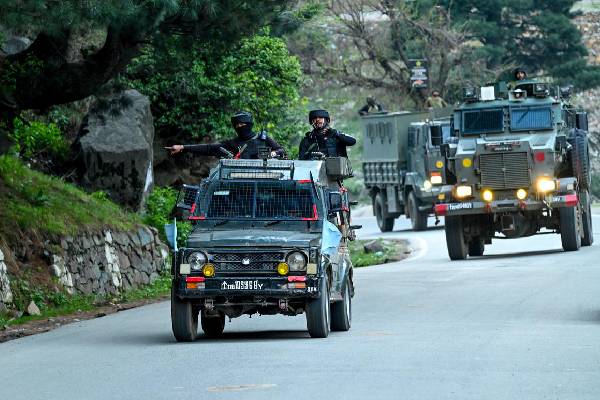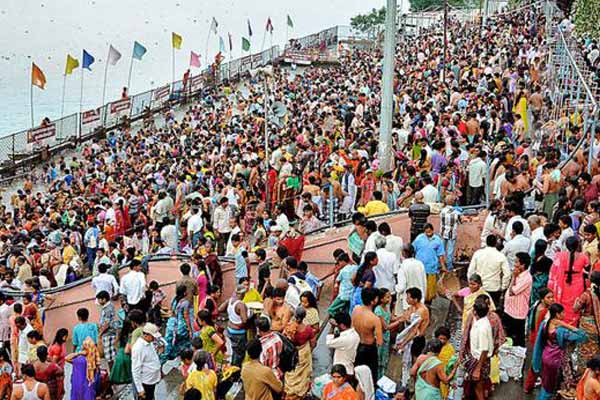As Telangana and Andhra Pradesh get ready to organise the 12-day long River Krishna Pushkar event from Friday, the police force and volunteers on both sides of the border are tense. After all, they have not forgotten that the last two Pushkars organised in the two states saw deaths due to stampede.
While three people died in a stampede in Vijayawada in 2004 during the previous edition of the Krishna Pushkar, things went horribly wrong on day one of the Godavari Pushkar in July in Rajahmundry last year. 27 pilgrims died due to closing of the main Pushkar ghat for more than two hours after the Pushkar began because VIPs including chief minister Chandrababu Naidu and his family members were taking a holy dip. The gates were opened only after they left, leading to jostling. The police made matters worse by using force. With extremely poor crowd control, 30 pilgrims were injured and 25 of the 27 dead were women.
The question is : Have lessons been learnt from the Rajahmundry tragedy? Experts say yes and no. Disaster management expert WG Prasanna Kumar is miffed with Andhra Pradesh that is creating parallel several events in Vijayawada to coincide with the Pushkar. This, Kumar argues, will put tremendous stress on the administration.
“Andhra is trying to project Vijayawada. It is inviting people by organising events around the Pushkar, which to my mind is inviting trouble,” says WG Prasanna Kumar, disaster management expert. Roughly 40 lakh pilgrims are expected to take a dip in the ghats in the five districts of Telangana and Andhra Pradesh everyday. Of them, 15 lakh will converge only on Vijayawada, which is located on the banks of the Krishna.
Several cultural programmes and seminars have been organised in Vijayawada, which Kumar points out is against National Disaster Management Authority guidelines. Besides what should worry the authorities is that the capacity of the city’s famous Kanakadurga temple, which most devotees are likely to visit during the Pushkar is a maximum of 1.5 lakh. How will the administration manage if even 5 of the 15 lakh trek towards the temple.
The Tirumala Tirupati Devasthanams too has erected a replica of the Tirumala shrine in Vijayawada to attract devotees. The government also plans to serve food to 4-5 lakh people, to give the sense of a lavish arrangement. The problem will arise when the other 2/3rd of the crowd also throngs for the same food. In contrast, Telangana is keeping it simple by distributing one kind of prasadam.
But as far as the ghats are concerned, the government seems to have got its act together to avoid a repeat of Rajahmundry. The VIP area has been segregated and kept away from the main area. Strict instructions have been issued to ensure no one is allowed into the ghats on Thursday night itself. People are to be allowed to the ghats only after sunrise on Friday.
Police teams on mobikes have been formed which will monitor the movement of pilgrims from Hyderabad and stop them much before the bathing ghats, in case there is paucity of space. Both Telangana and Andhra governments have invested heavily in technology, particulary citizen-friendly apps to ensure communication is not a casualty in case of overcrowding at any of the ghats.

































